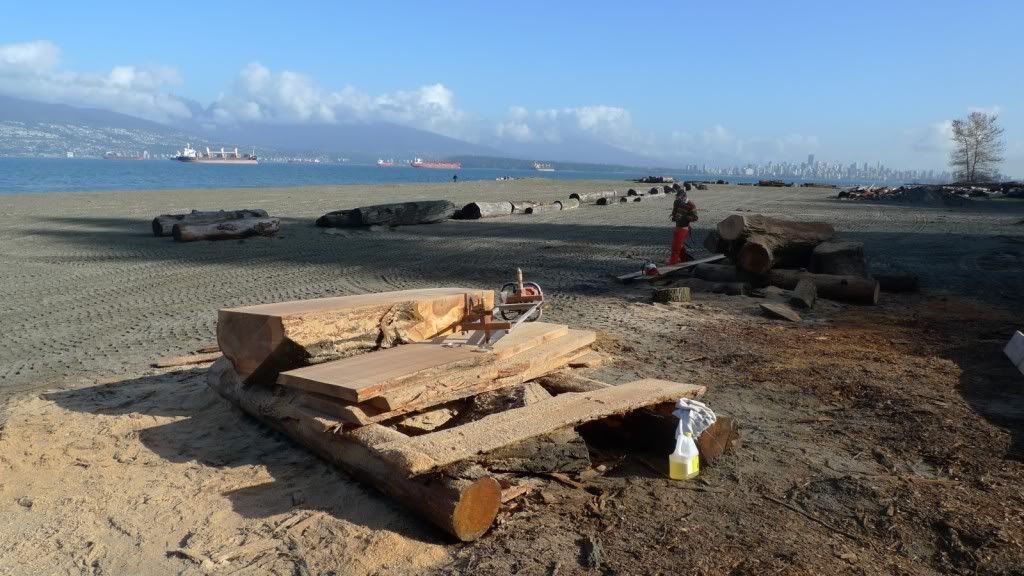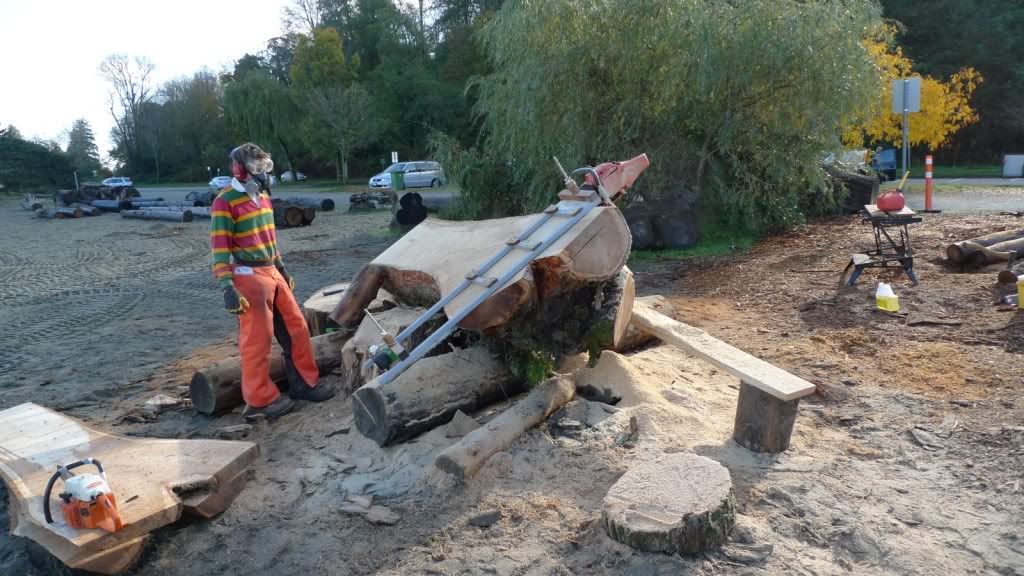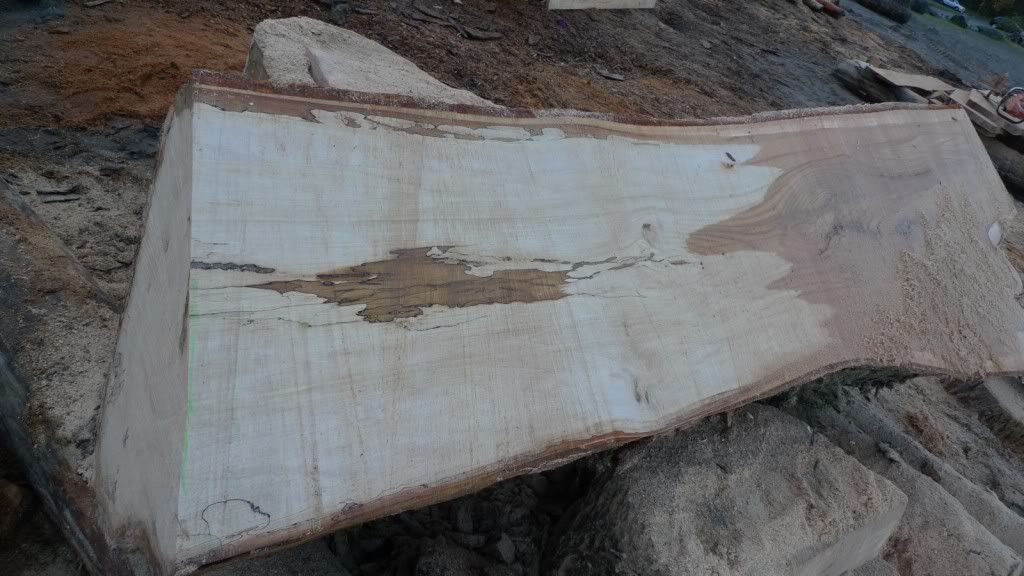Daninvan
ArboristSite Operative
My buddy and I showed up at the milling site this AM, there was a couple of elm logs for us. One about 8' long the other about 10'.
I arrived first and started peeling the bark on one of them. It was one of the most tenaciously attached barks I have ever tried to remove.

My buddy arrived second and so had to debark the larger piece, which also had a promising looking crotch at one end. I was hoping that I could mill one and he could mill the other, so we would get a lot of milling done. Unfortunately, it was not to be. I got 3 slabs pulled off of the smaller log, but to use the 60" mill on the larger log took both of us to manhandle.
Notice as well what a lovely day it was. Unusual for Vancouver in November.


We got three of the crotch slabs. It was one of those days where there just seemed to be an awful lot of time spent on setup. Debarking, sharpening, changing powerheads, trimming, etc. Six and half hours for two guys to get six slabs is hardly a good day's work. I am so disgusted about it that I may go back tomorrow and try to peel a few more slabs off to make it seem worthwhile. I am sure I can get another ten slabs out of what's left. I also hate to let it go now that so much time has been spent getting them all set up. The rest of the cuts will be pure gravy.
Also, the larger log was spalted, it had a crazy pattern in it.

I arrived first and started peeling the bark on one of them. It was one of the most tenaciously attached barks I have ever tried to remove.

My buddy arrived second and so had to debark the larger piece, which also had a promising looking crotch at one end. I was hoping that I could mill one and he could mill the other, so we would get a lot of milling done. Unfortunately, it was not to be. I got 3 slabs pulled off of the smaller log, but to use the 60" mill on the larger log took both of us to manhandle.
Notice as well what a lovely day it was. Unusual for Vancouver in November.


We got three of the crotch slabs. It was one of those days where there just seemed to be an awful lot of time spent on setup. Debarking, sharpening, changing powerheads, trimming, etc. Six and half hours for two guys to get six slabs is hardly a good day's work. I am so disgusted about it that I may go back tomorrow and try to peel a few more slabs off to make it seem worthwhile. I am sure I can get another ten slabs out of what's left. I also hate to let it go now that so much time has been spent getting them all set up. The rest of the cuts will be pure gravy.
Also, the larger log was spalted, it had a crazy pattern in it.
















































